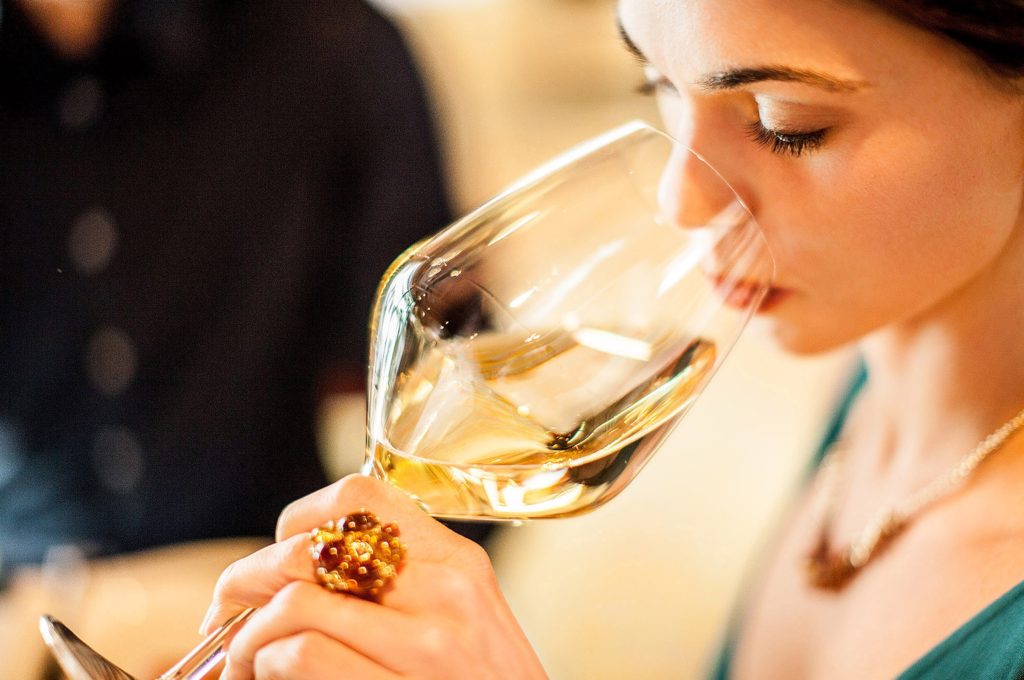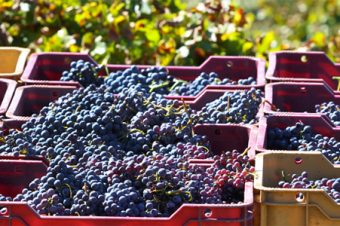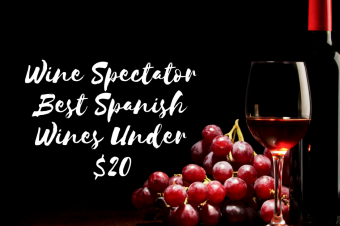There is a proper method to tasting wine when you and your friends get together to taste wine. If you follow these steps you will find you improve with your general knowledge of wine and have a more successful wine tasting.
First Step: Color
The first thing you need to do is to look at the color of the wine and the clarity. You will do this by pouring the wine in a glass and look at it. Tilting the glass, you need to look at the color of the wine from the middle of the glass to the edges.
It is easier to see the color of the wine if you have a white background behind your wine glass. If you are in a restaurant you might want to hold up a paper napkin or a white tablecloth.
When you assess the color of the wine there are a few things to look at. If you are looking at a red wine, is it red, purple, maroon, ruby, garnet, brick, or even close to beige brown? A white wine may appear pale yellow, green, golden, amber, or light brown also. The colors make a big difference.
As you look at the wine in your glass you also want to see if there is any sediment in the wine. You can tell this by swirling the glass. It is important to measure the opacity of the wine also. The wine may be watery looking, dark, opaque or translucent. Is the wine dull in color or brilliantly shining? It may even be cloudy or clear. These aspects are very important.
When you swirl a glass it helps you see many things. You can see if there is any sediment in the wine. It also helps by vaporizing some of the alcohol and release the natural aromas in the wine. This will help you gain a good impression of a wine immediately. It is important to learn how to properly smell wine.
Second Step: Aroma
Be sure to put your nose almost in the glass so you can inhale the wine. Think about what you smell. You might smell things like berry, flowers, oak, citrus, and more.
Swirling the wine allows you to smell the natural and true aromas of the wine. The aroma of the wine is the best indicator of the characteristics of the wine that are unique. You can also tell the quality of the wine by smelling it.

Third Step: Taste
You will next take a taste of the wine. Sip the wine gently and roll it around in your mouth. Think about the initial impression the wine has on your palate. This is where integration comes in; alcohol content, tannin, acidity, and residual sugars.
All of these should be balanced. You might notice one component has more than the other. There may not be a specific flavor that you notice with the intensity of the wine. You are looking to see if the wine is heavy, light, crisp, sweet, dry, and the entire complexity.
Next you will really taste the wine. This is called the middle range phase. You will need to decide on the actual flavor profile of the wine. You might taste a fruit or a spice.
After you taste the wine you will also decide how long the flavor remains in your mouth after you swallow it. The aftertaste is very important. Some very sweet tasting wines often go bitter after a few moments of tasting. This is where you really will decide if you like the wine or not.







